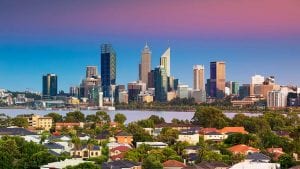Falling demand has sent Australia’s rooftop solar market into a decline that could lead to more than 3,400 job losses over the next 12 months, according to a report commissioned by industry body REC Agents Association (RAA).
The report by Green Energy Markets for RAA shows that while Australia installed over 1 gigawatt of solar PV in 2012 (making it the seventh-largest market in the world), it has seen a 22 per cent drop in the amount of solar PV installed over the past 12 months since the phasing out of government support programs. And it’s a situation that is unlikely to improve without increased policy certainty.
“The future of the residential solar market in Australia may depend on finding new ways of refinancing the cost to customers, tax changes to make solar leasing more attractive and finding new markets, such as renters and low-income earners,” says the report.
The report identifies a number of other challenges facing the solar industry, including the upcoming review of Australia’s 20% by 2020 Renewable Energy Target, which has be blamed for creating investment uncertainty in the industry.
It also calls on the government to “reaffirm its strong support” for the Small-scale Renewable Energy Scheme, which creates a financial incentive for small solar systems.
“The Renewable Energy Target has helped almost 5 million Australians install solar, making a material contribution to meeting our energy needs”, said Ric Brazzale, CEO of Green Energy Markets and President of the REC Agents Association.
“The Government’s Million Solar Roofs program, in partnership with the Renewable Energy Target, has the potential to inject new energy into the solar market by helping low income earners and renters install solar”, said Mr Brazzale. “There is simply no need to change the Small-scale Renewable Energy Scheme through a Review of the Renewable Energy Target.”
“The SRES is working properly,” said Fiona O’Hehir, CEO of Greenbank Environmental and Vice-President of RAA, in an interview with RenewEconomy on Thursday. “Demand has cooled, everything is going the way it should, but we expect the industry to stay in decline if we don’t get some certainty soon.”
O’Hehir said that by 2015, the SRES was calculated to cost just $6.50 from an average $500 a quarter power bill, but that this cost was then further reduced by the reduction in the wholesale cost of electricity that is delivered by solar, taking it down to just $1.90 per quarter, or just 0.38% of a typical household quarterly bill.
One of biggest things that this report illustrates, said O’Hehir, is that Australia’s small-scale solar industry has developed into a significant industry, with an annual turnover of around $3.5 billion. It has also, she said, been a significant contributer to reduced the cost of wholesale electricity.
“We are really looking forward to the federal government’s rollout of million solar roofs,” she said.









